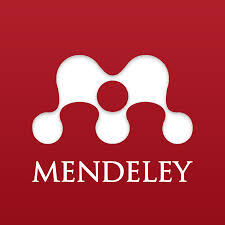Pengaruh Prosentase Kepekatan Kaca Film Terhadap Distribusi Termal dan Pencahayaan Kabin Kendaraan
DOI:
https://doi.org/10.36526/v-mac.v6i1.1293Abstract
Window film is a thin layer on car glass that functions as a medium for repelling sunlight. This study aims to determine the effect of percentage of window film density on the thermal and lighting distribution of the vehicle cabin. This research was conducted using a room model measuring 50x50x30 cm. The variation of window film uses two brands of Ultima and 3M, with the respective percentages of 40% and 60%. When the experiment was carried out in an open space, the irradiation process was carried out for 2 hours using the sun's rays at 11.00 - 13.00 WIB in each variation. Temperature measurement uses a digital thermometer on the surface of the coated glass (T1) and indoors (T2), while the measurement of light intensity uses a lux meter that is placed outdoors (I1) and indoors (I2). Data analysis using the equations of temperature rate and effectiveness of heat and light reduction. The results showed that the difference in the percentage of glass film density affected the rate of heat transfer and the intensity of the light entering the room. The heat transfer rate tends to increase in Q1 with a value of 58375.61 joules, and decrease in Q2 with a value of 1160.46 joules in the variation of 3M glass film brands with a 60% concentration level. Meanwhile, the average temperature increase rate is 0.002 ℃ / minute for all variations of window film brands with a light intensity of 0.007 - 0.008 lux.
Keywords : window film, temperature rate, light intensity, heat transfer.
Downloads
Published
How to Cite
Issue
Section
License
uthors who publish with this journal agree to the following terms:
1. Copyright on any article is retained by the author(s).
2. The author grants the journal, the right of first publication with the work simultaneously licensed under a Creative Commons Attribution License that allows others to share the work with an acknowledgment of the work’s authorship and initial publication in this journal.
3. Authors are able to enter into separate, additional contractual arrangements for the non-exclusive distribution of the journal’s published version of the work (e.g., post it to an institutional repository or publish it in a book), with an acknowledgment of its initial publication in this journal.
4. Authors are permitted and encouraged to post their work online (e.g., in institutional repositories or on their website) prior to and during the submission process, as it can lead to productive exchanges, as well as earlier and greater citation of published work.
5. The article and any associated published material is distributed under the Commons Attribution 4.0 International License.





















